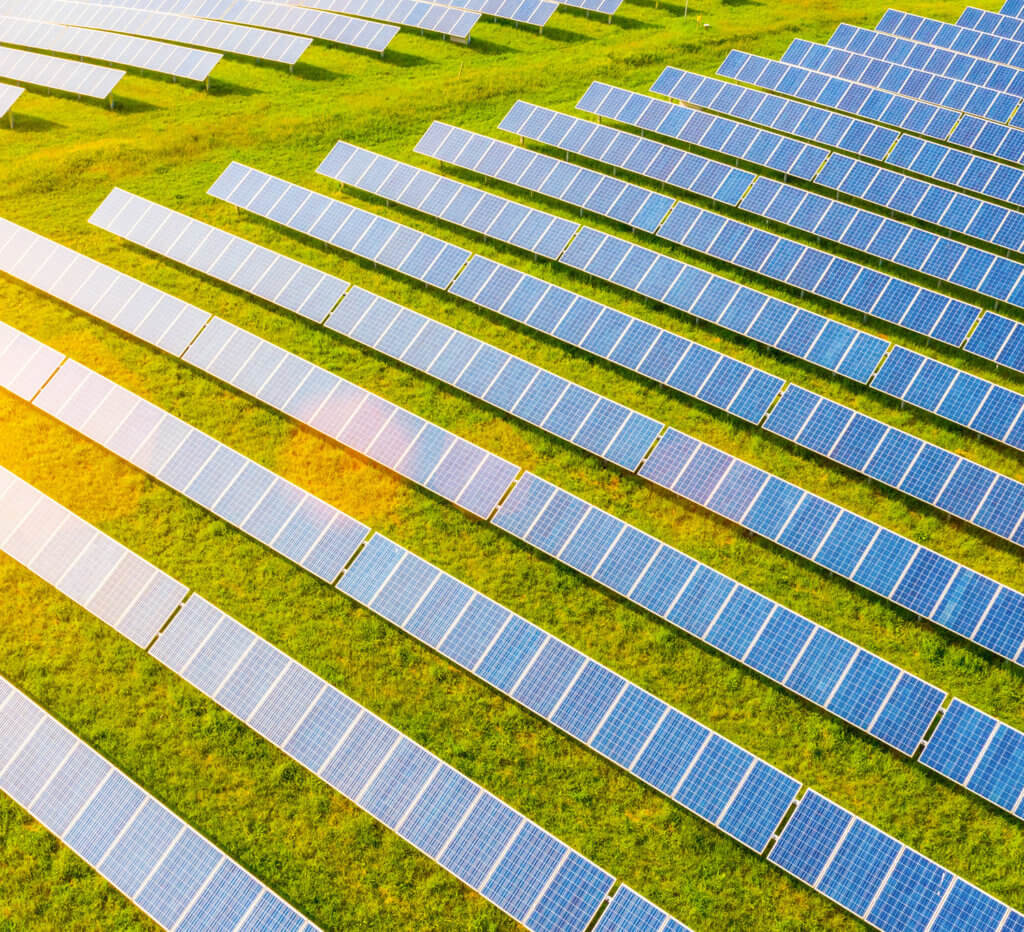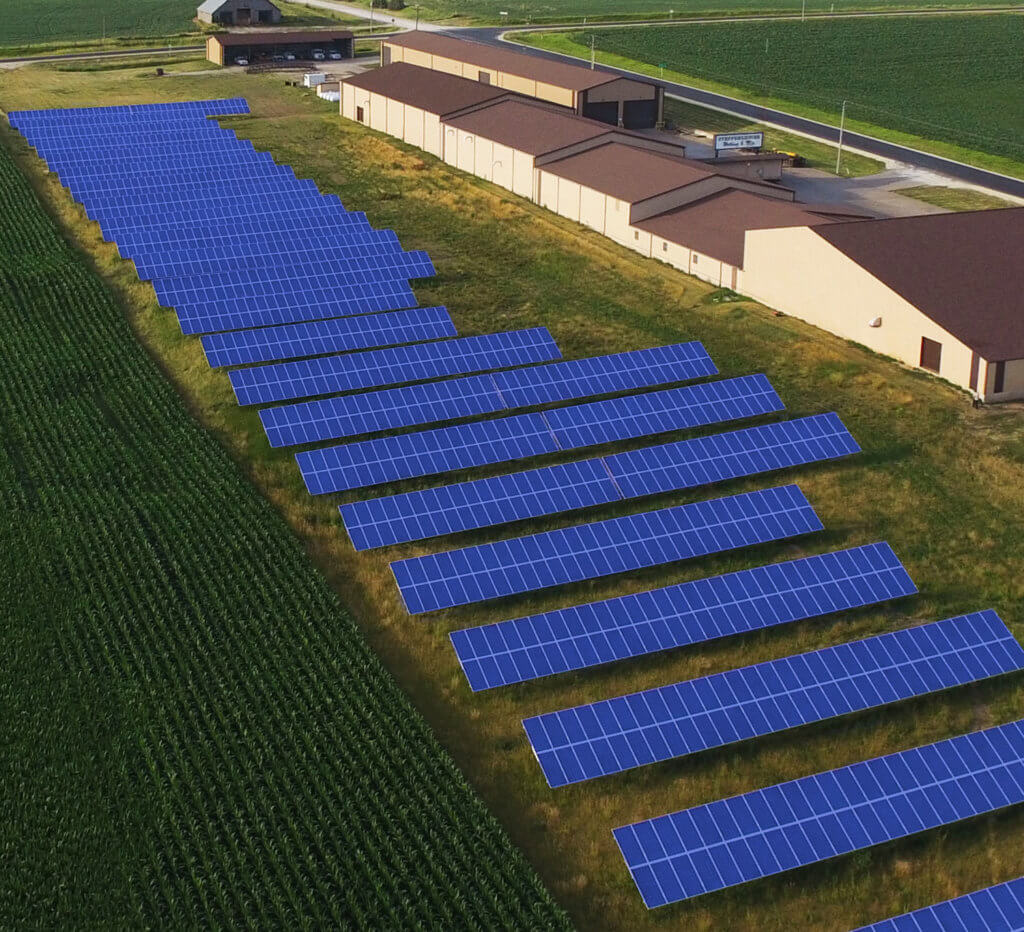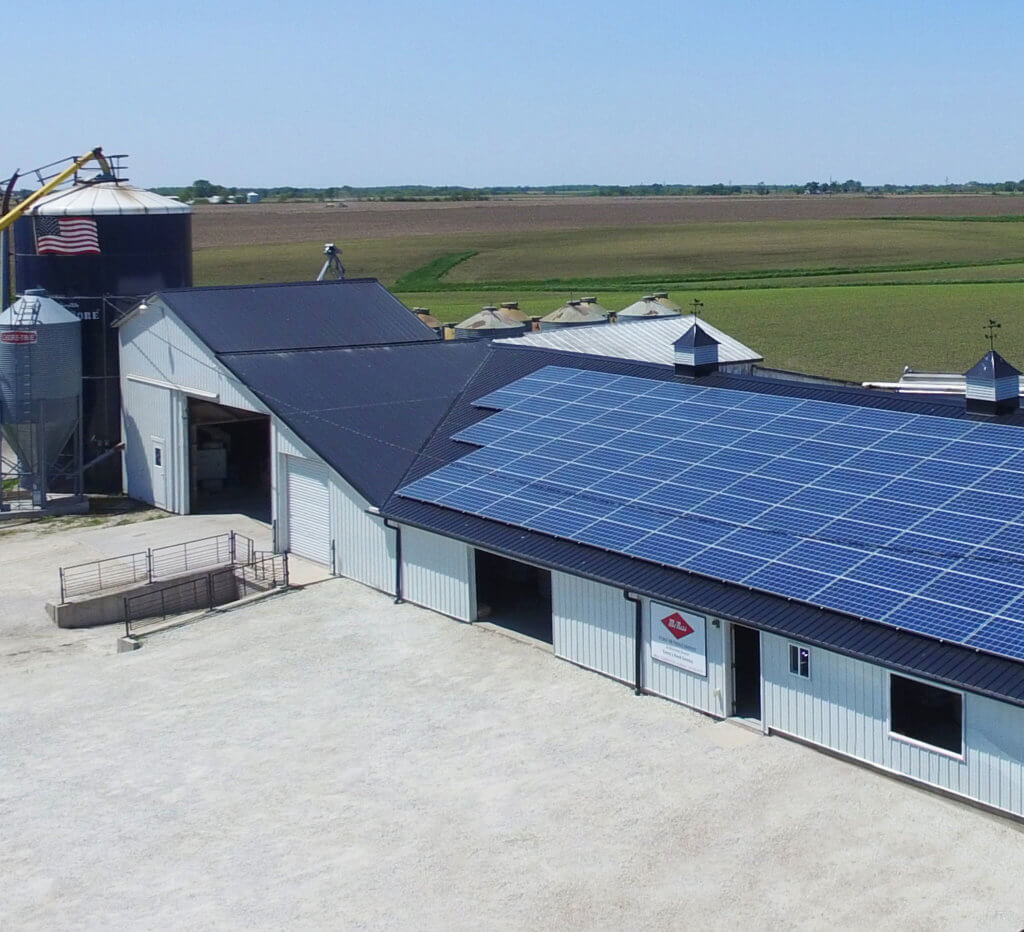
Changes Coming to Solar Net Metering
Inside the Technical Calculations
Channing Congdon, Director of Design at Ideal Energy, dives into the calculations behind Alliant Energy’s new net metering cap, as per Alliant Energy’s public filings with the Iowa Utilities Board
The Iowa Utilities Board (IUB) recently accepted a proposed rule change from Alliant Energy, one of Iowa’s two major electric utility providers. This new ruling will drastically change how net metering works in Interstate Power & Light’s (Alliant) service territory and will reduce the financial viability of new solar installations for both residential and smaller commercial customers. Our calculations show that there could be a 62-68% reduction in net metering for Residential and General Service customers.
Alliant Energy’s new tariff is scheduled to take effect on April 1st of this year and will impact Alliant’s 488,000 electrical customers across Iowa, pending final approval from the IUB.
THE CONTROVERSY
Alliant Energy spokespersons are insisting that the new net metering ruling will have benefits to net metering. Contrary to this message however, are the filings made by Alliant Energy with the Iowa Utilities Board, which add a cap for the first time on how much solar generation is eligible for net metering.
In a recent article in the Des Moines Register, Jason Foss, a spokesperson for Alliant Energy denied that the new tariff would have a negative impact on net metering, saying, “There’s no data that supports it.” Douglas Kopp, an Alliant Senior Vice President was also quoted as saying, “We don’t think that [the ruling] will have a huge financial impact on people.”
In an article in Radio Iowa, Douglas Kopp says that the changes being proposed would benefit solar clients. Kopp states that “During the course of the year, customers will continue to get a full retail credit as they go through that year and then at the end of the year, we will cash out any remaining balance at what’s essentially the wholesale market price for energy.” Kopp avoided commenting on how the new cap reduces the amount of net metering available to Alliant Energy’s customers looking to offset their energy bills with solar.
Alliant Energy has declined to comment or provide guidance on the differences between the current system and the proposed pilot which will replace it. Perhaps Alliant Energy should provide clarification to its customer base on how this new net metering cap “expands renewable distributed generation in Iowa” as per the Iowa Utilities Board’s original request.

CURRENT SOLAR NET METERING TARIFF
Under the current rules a typical Iowa household using about 12,000 kWh of electricity per year could purchase a 10 kW solar installation that would save the family $1560 in the first year and pay for itself completely within 10-11 years. The design lifecycle of solar is 25 years.

NEW SOLAR NET METERING TARIFF
Under the new tariff, only 3.43 kW of the same 10 kW installation would be eligible for net-metering, and would save the same family only $979 per year and take 18-19 years to pay for itself. The design lifecycle of solar is 25 years.
THE IMPACT: THE GRITTY DETAILS
The data from which we’ve derived the calculations demonstrating the reduction in net metering are public record based on Alliant Energy’s filings with the Iowa Utilities Board, using numbers from Annual Class Load Data Filed on May 12, 2016, IAC-2016-3511 and Alliant’s Interpretation Letter filed on August 31, 2016, TF-2016-0321. It is important to note that as of March 22nd, 2017, there has not been an official release of additional guidance from Alliant on how to calculate the reduction in net-metering for Alliant’s customers outside of the August 2016 Interpretation Letter.
Deriving the data to arrive at these calculations is a scavenger hunt through a year+ of Alliant’s filings through the Iowa Utilities Board. Alliant Energy’s choice to not include the customer class load factors with the tariff, revised tariff, or accompanying interpretation letter filings added ambiguity and opaqueness to the nature of the proposed tariff change. Using the calculated load factor data is the only way to properly calculate the load cap per Alliant Energy’s Interpretation Letter. In short, Alliant Energy made up the rules and has not shared the rulebook.
Below is a detailed description of the technical calculations from which we’ve demonstrated the negative impact of the new net metering ruling for Alliant Energy’s Residential and General Service commercial customers.
HOW TO FIND ALLIANT ENERGY’S NEW NET METERING LOAD CAP
The interpretation letter puts forward an ‘example’ for calculating the net-metering load cap using a 25% load factor. In this scenario, the 25% load factor is completely hypothetical and merely demonstrates how the net-metering load cap calculation is made.
Alliant Energy’s Interpretation Letter states:
“If the residential customer class average load factor is 25 percent, and a customer’s annual usage is 12,000 kWh, the customer specific load calculation is Load Cap = Annual usage / 8,760 hours in a year divided by the customer class load factor … the calculation for a customer using 12,000 kWh annually is 12,000 annual kWh / 8,760 hours / 25% = 5.48 kW.”
The key points that we take away from the example put forward in Alliant Energy’s Interpretation Letter are that there is a ‘load cap’ that is being added to net-metering and that the ‘class average load factor’ is the crucial variable that controls how drastic the reduction in net-metering is.
EXPLAINING LOAD FACTOR
Load factor represents the volatility of a customer’s kW load. A higher load factor percentage indicates that usage is relatively stable. A load factor of 100% would mean that there would be a constant kW usage all year. A lower load factor percentage indicates greater volatility with periods of higher and lower kW usage. The lower the percentage, the greater the peak kW.

The formula for calculating Load Factor:

FINDING LOAD FACTOR BASED SOLELY ON ALLIANT’S INTERPRETATION LETTER & CLASS LOAD DATA
Alliant’s Interpretation Letter states that:
“For a customer with no historic usage, IPL will utilize the customer class non-coincident demand from the annual class load data filing to make this determination.”
The vast majority of Alliant customers on the General Service and Residential tariffs do not have meters that record demand usage, meaning that they have ‘no historic usage.’ Which would mean that their net-metering load cap would be calculated using the ‘annual class load data filing.’
Alliant’s Interpretation Letter states that:
“Annual customer class data is provided in IPL’s annual class load data filed in compliance with 199 IAC 35.11.”
ALLIANT ENERGY’S ANNUAL LOAD CLASS DATA
We used the Iowa portion of the load data in the Annual Class Load Data filing from May 12th, 2016, IAC-2016-3511, because the new net-metering tariff is Iowa-specific.
The 2015 kWh usage numbers for each class were found on page 46 of the Class Load Data filing, under the ‘MONTHLY BILLED KWHS AND CUSTOMERS BY CLASS – 2015’ table in the Iowa KWH column and the Total / Average row.
Class kWh Usage from pg. 46 of the Class Load Data filing


Per the interpretation letter we then found the ‘non-coincident demand from the annual class load data.’ In this case, the ‘non-coincident demand’ per the Class Load Data filings Table of Contents could be found in Table 1 on pages 3 – 5 of the filing, the Class Peak Days. We found the annual peak kW demand by selecting the highest value from the Iowa Portion of Total System Class Max kW column.
Class Non-coincident kW Demand from pg. 3 and 4 of the Class Load Data filing
Residential, pg. 3:


Numbers for Calculations from Class Load Data:

FINDING LOAD FACTOR
Then using the annual kWh usage and non-coincident kW demand we calculated the ‘customer class load factor’ by using the annual load factor formula. Calculations shown below:



With these calculations we have found the ‘customer class load factor.’ For Residential customers it is 39.9% and for General Service customers it is 47.8%. With those load factors we are able to calculate the net-metering ‘load cap’ and also the reduction in net-metering for Alliant customers.
CALCULATING THE NET METERING LOAD CAP
In order to use the ‘customer class load factors’ we referred again to the ‘example’ calculation where the formula ‘12,000 annual kWh / 8,760 hours / 25% = 5.48 kW’ is used. We replaced the ‘example’ 25% load factor and used the actual ‘customer class load factors’ that we calculated from the Annual Class Load Data filing. Calculations shown below:
![]()
![]()
CALCULATING THE NET METERING LOAD REDUCTION

To find the impact of the ‘load cap’ on net-metering, we compared it to what would have would have been installed under the old net metering tariff to fully offset the kWh usage. We assumed that every kW DC of solar that was installed would produce 1,200 kWh – an industry-standard assumption for Iowa’s latitude and seasonal weather patterns. We also assumed that the solar installation would have a 1.1 DC to AC ratio.
Applying these assumptions to the Residential and General Service usage examples:
![]()
![]()
We found that for the example Residential customer a 9.09 kW AC solar system that would have been installed and fully net-metered under the old rules has been limited to a 3.43 kW ‘load cap’ under the new rules. This represents a 62.3% reduction for Residential. For the example General Service customer a 90.91 kW AC solar system that would have been installed and fully net-metered has been limited to 28.66 kW AC. This represents a 68.5% reduction for General Service.
Another assumption that should be brought forward is the ability, or lack thereof, to install AC systems in such specific sizes. Solar string inverters are offered in fixed sizes. For example, there is a SolarEdge 3.0kW AC inverter and a SolarEdge 3.8kW AC inverter. A 3.43 kW AC ‘load cap’ could be seen as a de facto 3.00 kW AC cap.

TAKING ACTION
We believe this ruling could end residential solar in Iowa, dramatically curtail small business solar, and severely damage the solar industry. Coincidentally, Alliant Energy has released plans to petition the Iowa Utilities Board on April 3rd for a rate increase of 10-12%.
If you’re concerned about the Iowa Utility Board’s acceptance of this new tariff ruling, take action by signing the petitions and contacting the Governor’s office at: www.saveiowasolar.org We also encourage you to write to your local news outlets and urge them to cover the issue.
ADDITIONAL INFORMATION
How the new ruling began: A timeline

On Oct 30th 2015, the IUB Requested IPL & MidAm to develop “pilot projects exploring various aspects of net metering or other [distributed generation] issues that could be used to inform future policy or rule changes” for the purpose of expanding renewable distributed generation (DG) in Iowa.
On Jul 19th 2016, the IUB opens up the ‘load’ issue, requesting a tariff to “increase the net metering cap from 500 kW to 1 MW (up to 100 percent of a customer’s load).”
On Aug 31st 2016, Allliant Energy interpreted ‘load’ “as a customer’s maximum annual kilowatt (kW) demand,” creating a first-time cap on net-metering.
In Alliant Energy’s most recent filing on Feb 17th 2017, no additional information or clarifications were provided on how to calculate the new net-metering load cap.
What is Net Metering?
Net metering is a billing mechanism that credits solar energy system owners for the electricity they add to the grid. For example, if a residential customer has a PV system on the home’s rooftop, it may generate more electricity than the home uses during daylight hours. If the home is net-metered, the electricity meter will run backwards to provide a credit against what electricity is consumed at night or other periods where the home’s electricity use exceeds the system’s output. Customers are only billed for their “net” energy use. On average, only 20-40% of a solar energy system’s output ever goes into the grid. Exported solar electricity serves nearby customers’ loads.
What is Load Factor?
In electrical engineering the load factor is defined as the average load divided by the peak load in a specified time period.
What is Distributed Generation?
Distributed generation (DG) refers to electricity that is produced at or near the point where it is used. Distributed solar energy can be located on rooftops or ground-mounted, and is typically connected to the local utility distribution grid. States, cities and towns are experimenting with policies to encourage distributed solar to offset peak electricity demand and stabilize the local grid.
Source: SEIA
What is the Iowa Utilities Board?
The Iowa Utilities Board (IUB) is a public commission that regulates power, water, and telecommunications in Iowa. The three members of the board are appointed to six year terms by the Governor.
What is Alliant Energy?
Alliant Energy is the public utility holding company of Interstate Power and Light, one of the utilities in the state of Iowa. Most Iowans get their electricity from Interstate Power and Light, MidAmerican, or one of the rural electric cooperatives. Most solar installations in the state until now have been among Alliant Energy customers.








